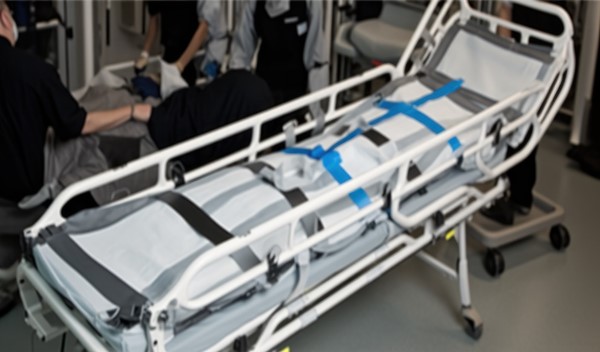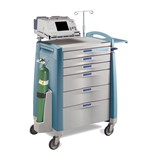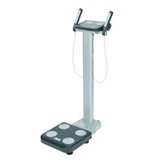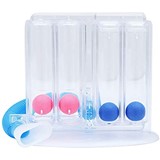Rescue stretchers play a pivotal role in the realm of healthcare, ensuring the safe and comfortable transportation of patients from one location to another. The significance of these stretchers cannot be overstated, as they form the foundation upon which the well-being of patients during transit is built.
I. Secure Strapping and Restraint Systems to Prevent Movement
A. The Significance of Secure Strapping in Patient Transport
- Preventing Unintended Patient Movement: Secure strapping is the linchpin of patient safety during transport. It serves as an effective safeguard against unintended patient movement, a scenario fraught with potential risks. Patients, particularly those in critical condition, may be unable to control their movements. In such cases, secure strapping becomes indispensable in preventing any involuntary shifts that could lead to injuries or complications.
- Reducing the Risk of Injuries During Transport: Beyond immobilizing patients, secure strapping significantly reduces the risk of injuries. Abrupt movements or jolts during transport can cause harm, exacerbate existing medical conditions, or even lead to accidents. By firmly securing patients, these risks are mitigated, contributing to overall safety.
B. Types of Restraint Systems
- Five-Point Harness Systems: Among the array of restraint systems available, the five-point harness stands as a beacon of security. This system encompasses five points of contact, ensuring that patients are snugly but comfortably strapped in. The design typically includes shoulder straps, a lap belt, and a crotch strap, effectively immobilizing the patient.
- Cross-Body Straps: Cross-body straps are an alternative restraint system, particularly suited for patients with varying needs. They provide lateral support, minimizing side-to-side movement. When used in conjunction with other securing methods, they bolster the overall effectiveness of patient immobilization.
C. Proper Techniques for Securing Patients
- Ensuring a Snug Fit Without Causing Discomfort: Striking a delicate balance between secure restraint and patient comfort is paramount. Proper techniques involve adjusting the strapping to ensure a snug fit without causing undue discomfort. Healthcare professionals must be trained to achieve this equilibrium, as it directly influences patient well-being during transport.
- Regular Checks and Adjustments During Transport: The journey from one point to another is dynamic, with potential challenges such as terrain variations or vehicle movements. Thus, regular checks and adjustments of the strapping are essential. Continual monitoring helps maintain the patient's secure position and minimizes the chances of unexpected movement.
D. Advantages of Secure Strapping for Both Patients and Healthcare Providers
- Enhanced Patient Stability: Secure strapping elevates patient stability to a paramount level. Patients can remain in a controlled and fixed position, reducing the risk of any unintended movements that could lead to injury or complications. This enhanced stability translates into improved patient well-being during transportation.
- Reduced Strain on Healthcare Professionals: Beyond patient benefits, secure strapping also eases the physical demands on healthcare providers. Transporting patients can be physically taxing, especially in emergency situations. Proper strapping lessens the need for manual restraint, allowing healthcare professionals to focus on other aspects of patient care.
III.Padded and Cushioned Surfaces for Patient Comfort
A. The Role of Padding and Cushions in Patient Comfort
- Minimizing Pressure Points: Patient comfort during transport is not a luxury but a necessity. Padded and cushioned surfaces play a pivotal role in this regard by minimizing pressure points. Prolonged pressure on specific areas of the body can lead to discomfort and even the development of pressure ulcers. Padding helps distribute pressure more evenly, alleviating this concern.
- Preventing Skin Abrasions and Discomfort: The abrasive nature of some stretcher materials can be harsh on the skin. Patients, especially those with sensitive or compromised skin, are vulnerable to abrasions and discomfort during transport. Cushioned surfaces act as a protective barrier, reducing the likelihood of skin-related issues.
B. Types of Padding Materials
- Memory Foam: Memory foam, known for its contouring properties, is a popular choice for padding in rescue stretchers. Its ability to conform to the patient's body shape provides personalized comfort and support. Additionally, memory foam redistributes pressure, reducing the risk of pressure ulcers.
- Gel Cushions: Gel cushions offer a different approach to padding. They incorporate gel-filled compartments that adapt to the patient's body contours, providing optimal support and comfort. The cooling properties of gel can also enhance the patient's experience during transport.
C. Incorporating Padding into Stretcher Design
- Strategically Placed Cushioning: Effective incorporation of padding into stretcher design involves strategic placement. Areas prone to pressure points, such as the back, buttocks, and heels, should receive extra attention. Stretcher manufacturers design their products with these considerations in mind to maximize patient comfort.
- Easily Removable and Washable Padding: Hygiene is a critical aspect of patient care. Hence, rescue stretcher designs often feature easily removable and washable padding. This not only ensures patient comfort but also facilitates the maintenance of a clean and sterile environment.
D. Benefits of Padded Surfaces for Patients
- Enhanced Comfort During Transport: The primary benefit of padded surfaces is the enhanced comfort they offer patients during transport. For individuals experiencing pain or discomfort due to their medical condition, the cushioned surface can make a significant difference in their overall experience.
- Reduced Risk of Pressure Ulcers: Pressure ulcers, also known as bedsores, are a common concern for immobilized patients. The use of padding significantly reduces the risk of developing these painful and potentially severe skin conditions. This preventive measure aligns with the overarching goal of ensuring patient comfort and well-being during transport.
IV. Minimizing Shock and Vibration During Movement
A. Understanding the Impact of Shock and Vibration on Patients
- Potential Discomfort and Pain: Shock and vibration experienced during transport can be distressing for patients. These forces, if not adequately managed, can lead to discomfort, pain, and anxiety. Understanding the impact of these factors is crucial for healthcare providers striving to ensure patient well-being.
- Risk of Exacerbating Medical Conditions: Patients with underlying medical conditions, especially those related to the musculoskeletal system or cardiovascular health, are particularly susceptible to the adverse effects of shock and vibration. Inadequate management can exacerbate these conditions, posing significant risks.
B. Design Features to Minimize Shock and Vibration
- Suspension Systems: Effective stretcher design incorporates suspension systems that absorb and distribute shocks and vibrations. These systems act as a buffer between the patient and external forces, ensuring a smoother ride.
- Shock-Absorbing Materials: Materials with shock-absorbing properties are strategically used in stretcher construction. These materials dampen vibrations and reduce their transmission to the patient, promoting a more comfortable and stable transport experience.
C. Testing and Quality Control Measures
- Ensuring the Effectiveness of Shock and Vibration Reduction: Stretcher manufacturers employ rigorous testing and quality control measures to validate the effectiveness of shock and vibration reduction features. These measures involve simulated transport conditions to assess the stretcher's performance in real-world scenarios.
D. Advantages of Reduced Shock and Vibration
- Improved Patient Well-Being During Transport: The paramount advantage of minimizing shock and vibration is the improved well-being of patients during transport. A smoother ride translates to less discomfort and anxiety, contributing to an overall positive patient experience.
- Enhanced Stability for Medical Equipment: Beyond patient comfort, the reduction of shock and vibration has a secondary benefit—enhanced stability for medical equipment. Medical devices and equipment transported with the patient are sensitive to vibrations. By minimizing these forces, the integrity and functionality of equipment are preserved, ensuring the continuity of care.
V. Importance of Proper Head and Neck Support
Proper head and neck support play a pivotal role in ensuring the safety and comfort of patients during transport on rescue stretchers. This section explores the critical significance of head and neck support, design considerations for headrests and neck supports, the importance of patient positioning and alignment, and the numerous benefits associated with providing adequate support in this area.
A. The Critical Role of Head and Neck Support
- Preventing Head and Neck Injuries: One of the primary functions of head and neck support is to prevent injuries to these vulnerable areas. During transportation, patients may encounter sudden movements, bumps, or jerks. Without proper support, these movements can lead to head and neck injuries, including muscle strains, sprains, and even more severe trauma.
- Ensuring Patient Comfort: Beyond injury prevention, head and neck support is essential for ensuring patient comfort. Patients who are transported without adequate support may experience discomfort and anxiety, which can further exacerbate their medical conditions. Proper support allows patients to relax and feel more at ease during transit.
B. Design Considerations for Headrests and Neck Supports
- Adjustable Options: Headrests and neck supports should offer adjustable options to cater to the unique needs of each patient. Adjustability ensures that the support can be customized to fit the patient's head and neck dimensions comfortably. This adaptability is especially crucial when dealing with patients of various sizes and medical conditions.
- Ergonomic Design: The design of headrests and neck supports should prioritize ergonomics. Ergonomically designed supports follow the natural contours of the head and neck, reducing the risk of straining or forcing these areas into uncomfortable positions. This design approach contributes significantly to patient comfort.
C. Patient Positioning and Alignment
- Avoiding Hyperextension or Flexion: Improper positioning of the head and neck can lead to hyperextension or flexion, which can be uncomfortable and potentially harmful. Healthcare professionals must ensure that the patient's head and neck are correctly aligned with their body during transport. This alignment minimizes the risk of strain or injury.
D. Benefits of Adequate Head and Neck Support
- Reducing the Risk of Musculoskeletal Issues: Adequate head and neck support not only prevents immediate injuries but also reduces the long-term risk of musculoskeletal issues. Patients transported without proper support are more likely to develop muscle tension, stiffness, and even chronic pain in the neck and upper back areas.
- Enhancing Patient Relaxation During Transport: Patients are often anxious during medical transport, and discomfort can exacerbate their anxiety. Adequate head and neck support can help patients relax, promoting a more positive transport experience. This, in turn, can contribute to better overall patient outcomes.
VI. Strategies to Maintain Patient Stability and Prevent Injury
Ensuring patient stability and preventing injuries are paramount concerns when using rescue stretchers for medical transport. This section outlines the overarching strategies for achieving these objectives, addresses common transport-related injuries, discusses preparations for emergency situations, and emphasizes the importance of a holistic approach to patient safety.
A. Overall Strategies for Ensuring Patient Stability
- Proper Training of Healthcare Professionals: The foundation of patient stability during transport lies in the proper training of healthcare professionals. Those responsible for patient transport should receive comprehensive training on the use of rescue stretchers, patient handling techniques, and safety protocols. This training ensures that healthcare providers can effectively manage patient stability.
- Stretcher Design Features: The design of rescue stretchers plays a critical role in maintaining patient stability. Features such as sturdy frames, secure strapping systems, and ergonomic handles contribute to the overall stability of the stretcher during movement. Stretcher design should prioritize patient safety as a primary consideration.
B. Preventing Common Transport-Related Injuries
- Falls and Slips: One of the most common transport-related injuries is patient falls or slips from the stretcher. To prevent these incidents, healthcare professionals should ensure that the stretcher is on a stable surface before transferring the patient. Additionally, non-slip materials on the stretcher surface can enhance patient stability.
- Abrasions and Skin Injuries: Friction between the patient's body and the stretcher surface can lead to skin abrasions and injuries. Padded and cushioned surfaces, as discussed earlier, can significantly reduce the risk of such injuries. Healthcare providers should also ensure that patients are appropriately clothed to minimize skin-to-stretcher contact.
C. Emergency Situations and Patient Stability
- Preparing for Sudden Stops or Maneuvers: Medical transport vehicles may need to make sudden stops or maneuvers, especially during emergencies. Healthcare professionals must be trained to anticipate and respond to these situations, ensuring that patients remain stable and secure on the stretcher.
- Ensuring Patient Restraint During Emergencies: In emergencies, patient restraint is crucial to prevent injury. Sturdy strapping systems and quick-release mechanisms should be in place to secure the patient during these critical moments. Proper communication among the healthcare team is essential to coordinate actions effectively.
D. Holistic Approach to Patient Safety
- Combining All Discussed Elements for Optimal Outcomes: To achieve the highest level of patient safety, it's vital to combine all the elements discussed in this section. Proper head and neck support, secure strapping, padded surfaces, and healthcare provider training should work in tandem to ensure the well-being of the patient.
- The Role of Teamwork in Patient Transport Safety: Lastly, teamwork among healthcare professionals is indispensable for maintaining patient stability and safety. Effective communication, coordination, and mutual support within the healthcare team are essential components of a holistic approach to patient safety during transport.
In conclusion, the safe and comfortable transportation of patients using rescue stretchers is of paramount importance in the realm of healthcare. Rescue stretchers serve as the foundation upon which patient well-being during transit is built. Secure strapping and restraint systems play a crucial role in preventing unintended patient movement and reducing the risk of injuries during transport. Different restraint systems, such as the five-point harness and cross-body straps, offer flexibility in meeting patient needs while ensuring their safety and comfort. Proper techniques for securing patients, regular checks, and adjustments during transport are essential for maintaining a snug yet comfortable fit.



-160x160-state_article-rel-cat.png)






-160x160-state_article-rel-cat.png)





















